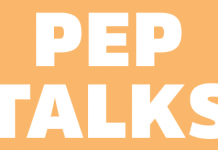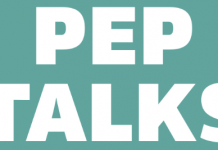
by Dave Baudry and Marc Puechner
“I would like then to invite Christians, confidently and with an informed and responsible creativity, to join the network of relationships which the digital era has made possible. This is not simply to satisfy the desire to be present, but because this network is an integral part of human life.”
In his message for World Communications Day this past January, Pope Benedict XVI acknowledges the existence of a “revolution” causing a transformation in present-day communication and social and cultural evolution. The pope also calls for an awareness of the possible pitfalls this transition can bring. He suggests that witnessing to the gospel through technology can aid in this cultural shift prompted by the Digital Age. The use of technology in catechesis can help proclaim the Message to communities in which the gospel has been absent.
Why Technology?
Faith formation, especially for young people, has always been about meeting them where they are. Many people today use technology, in particular social networking, to communicate and build communities with one another. Where a person’s real-world community might involve a few dozen people including friends, people from work and church, and family members, his or her virtual community can be connected to hundreds (and for a few, even thousands) of people.
Religion has always been a part of community building from the dawn of civilization (and perhaps, based on some recent discoveries, may have been the main catalyst), helping shape moral and ethical foundations. As Pope Benedict says in his Communications Day message, “there exists a Christian way of being present in the digital world,” and the Church evangelizes the Christian way through catechesis.
Where to begin? Start where you are. After all, most people gain their computer knowledge through trial and error. It’s very difficult to ruin a computer unless you pick it up and drop it on the floor. Don’t be afraid to ask questions or even take a class or two.
Technology Tools
Many technology tools can assist you in your ministry: the parish website, e-mail, texting, iPods/MP3 players, smartphones, Facebook, Twitter, Google, and YouTube to name just a few examples. These tools should help you accomplish two things: engage your audience more effectively and make communication easier and more efficient.
To help engage your audience, choose three to five tools or technologies that you know or might like to learn about. Allow yourself to learn as you go; you don’t have to be an expert to use technology. The most important thing to remember is that the lesson plan objective is the main focus. Technology is just a tool to help you present it.
E-mailing parents is a very effective alternative to nicely colored hard copies of flyers and parent letters that don’t always get home—landing, instead, in the garbage or becoming paper airplanes. At least 90% of all adults who use the Internet use e-mail. That leaves a small percentage, of course, that does not use e-mail. Take the time to contact the parents and learn their preferences, and honor their preferences as much as possible.
For students, e-mail is likely the best tool, but you may want to consider texting as well. Texts can be sent individually or in large groups. Text messaging can have a monetary cost as well, depending on your phone plan, and group texting needs special software or a paid service. E-mail is generally free and also saves on paper and postage.
Whenever you send information home to parents or students, always remember to CC (courtesy copy) your director, coordinator, or principal. This keeps communication open and everyone in the loop; it also is a good safety practice for you and the children you serve.
Resources to Explore
Many websites offer teacher resources. Publishers like Loyola Press (loyolapress.com), Our Sunday Visitor (osvcurriculum.com), Pflaum (pflaum.com), RCL Benziger (rclbenziger.com), Sadlier (sadlier.com), and Saint Mary’s Press (smp.org) are great places to find resource materials. Another website, americancatholic.org, is a good place to find simple, straightforward, and easy-to-understand answers to the typical questions people have about the Catholic faith.
Catholic university websites also offer wonderful material especially in the areas of spirituality and theology. The United States Conference of Catholic Bishops (usccb.org) and the Vatican website (vatican.va) are great for information and include links for the Sunday readings, a calendar of readings, and the Bible. Your diocese or parish websites can provide resources as well. Be sure to bookmark or save the websites you like.
The Christian Way
As catechists using technology, we want to model ethical and moral behaviors as well as safe practices. First, be sure you have permission to use whatever you find online. You can quote most information if you cite it properly, but pictures, music, entire publications, and other intellectual properties involve copyright issues. Always assume you need to obtain permission to use anything, which could mean paying a moderate fee, unless you know for sure the information is for public use.
Also, if you’re going to use social media, follow your diocesan guidelines. These rules are in place for your safety and for the safety of those to whom you minister.
Finally, remember that the Internet is a public arena; there is no such thing as anonymity or personal privacy. Be conscientious about what you post and send out to others, and make sure it reflects a Christian way of life.
Creative Ideas
Here are some ways you can incorporate technology into your formation programs:
Mission Trips: This is an incredible way to incorporate social networking and keep parents and people at the parish up to date on the experience. Have someone keep a daily journal on a blogging site like WordPress or Tumblr, where you can also post photos and videos of daily activities. You can also post on Facebook, Twitter, and YouTube, depending on the form of social networking with which everyone is most comfortable.
Character Building: One of the major online problems facing the Digital Continent—which applies in the real world as well—is a disconnect in understanding what is right and wrong. Internet safety and ethics are important topics to cover with young people and their parents. Issues like cyberbullying, sexting, hacking, and piracy are hot-button topics and must be addressed.
You can collect information through sites such as the FBI’s website, or bring in guest speakers to address these essential topics. The Internet creates a lot of gray area when it comes to moral and ethical behavior online. Faith formation through the Church can help sharpen those lines.
Scavenger Hunts: Businesses use this tactic to get potential customers to peruse their websites and online sales flyers. You can use the same idea to help your students check out solid Catholic websites that they can go to when they need answers or information about their faith and religion.
All you need to do is create a list of things for students to find. Start with a question like “Which version of the Bible is used on the Vatican website?” You can make older students work really hard by asking them to find the names of all the encyclicals written by a particular pope.
Have fun with this and don’t be afraid to challenge your students. Give them the websites they should be looking at to find the answers. You may be surprised at the discussions you will have about what your students discover on their scavenger hunts.
Stations of the Cross: Have students create a modern-day story about Jesus’ life, death, and Resurrection using technology. Break your class into small groups. Give students information and websites to check out about the Stations of the Cross, and have them do research before working on the actual presentation.
Encourage groups to be creative. Let them know that they will be presenting their projects to the entire class and perhaps even lower grades. Groups can present their projects by dramatizations with background music, PowerPoint presentations with or without music, or video dramatizations. If your meeting space has Internet access, students can use mediums like YouTube as well. Have groups talk about what they learned.
Patron Saints: Have Confirmation candidates prepare PowerPoint presentations on their patron saints or people whose faith they would like to model. Be sure to give students a few weeks to do research on their own.
Give students three to five minutes each to share their projects with the class. Each presentation should include interesting facts about the saint’s life, what difference he or she made in the world, and how the saint inspires the candidate to live out his or her own faith and make a difference in the world.
Set up the projector and computer ahead of time so all students have to do is plug in their flash drives. Make sure the parish version of PowerPoint is compatible with the version the candidates might be using at home. This is an excellent session for parents, sponsors, and the pastor to attend.
Church Seasons and Holy Days: Ask students to gather as much information as they can about a particular Church season or holy day of obligation. (You may want to provide a prize for the student who collects the most facts, or use some other standard to generate enthusiasm and encourage active participation.) Give students the websites they should research to gather their information. You might have older students share what they learn with younger students.
Remember: With any of these activities or others you might create, encourage your students to approach their projects in a Christian way, with an awareness to ethics, laws, and safety.
Be Not Afraid
If you are nervous about using technology in your ministry, you are not alone. Technology can seem intimidating at times, especially when you haven’t grown up with it.
Start with what’s easy and fits your needs. Then take time to learn about other forms of technology. Whether you take workshops or online courses or learn on the fly, go with what you’re drawn to. You and your students have a tremendous amount of information at your fingertips. Use what you know and allow your students to use what they know.
Just remember that technology is a tool, not the focus. Technology helps us convey the Message in our efforts to help students learn. Ultimately, it is important that students learn something about their faith and how it applies to their lives. As catechists, we are important mentors and partners to parents and peers in the spiritual formation of young lives. We have experience, insight, and background from which our students can learn and grow. With family dynamics today, students need many caring adults to guide them and talk openly about life and faith concerns.
In a presentation to the USCCB, Bishop Ronald Herzog of Alexandria, LA, stated, “Pope Benedict XVI calls the world of social media a Digital Continent, with natives, immigrants, and even missionaries. He encourages Catholics, especially our priests, to approach this culture of 140 characters and virtual friendships as a great opportunity for evangelization. We are asked to respect the culture of these Twitterers and Facebookers, and to engage on their terms to bring Christ into their ‘brave new world.’”
Bishop Herzog also pointed out that evangelizing in this new culture of technology and social media is more than just learning how to use it; it is also about learning how to “think, live and embrace life on the Digital Continent.”
Technology is not going away and, as catechists, we are called to meet people where they are. We are missionaries to the “Digital Continent,” and we are called to evangelize to real-world communities as well as virtual communities. It is our task to help teach how to live in this new world in a Christian way.
Dave Baudry is the Director of Christian Formation at St. Martin of Tours in Franklin, WI. He serves as a co-chairperson on the Technology in Faith Formation (TIFF) Committee for the Archdiocese of Milwaukee (johnpaul2center.org/Catechesis/Technology.htm).Marc Puechner is the owner of Arms Wide Open Solutions, which assists religious organizations in incorporating technology into their ministries more effectively (armswideopensolutions.com). Marc also serves as a member of the TIFF committee.
The online HTML editor now supports the use of an external CSS file to be applied to format the content of the visual preview of your document.
Copyright 2011, Bayard, Inc. All rights reserved. This article is protected by United States copyright and other intellectual property laws and may not be reproduced, rewritten, distributed, redisseminated, transmitted, displayed, published or broadcast, directly or indirectly, in any medium without the prior written permission of Bayard, Inc.
This article was written by the Catechist Staff and appeared in Catechist magazine, August 2011.
Image Credit: Shutter Stock 306873251




